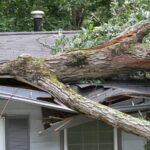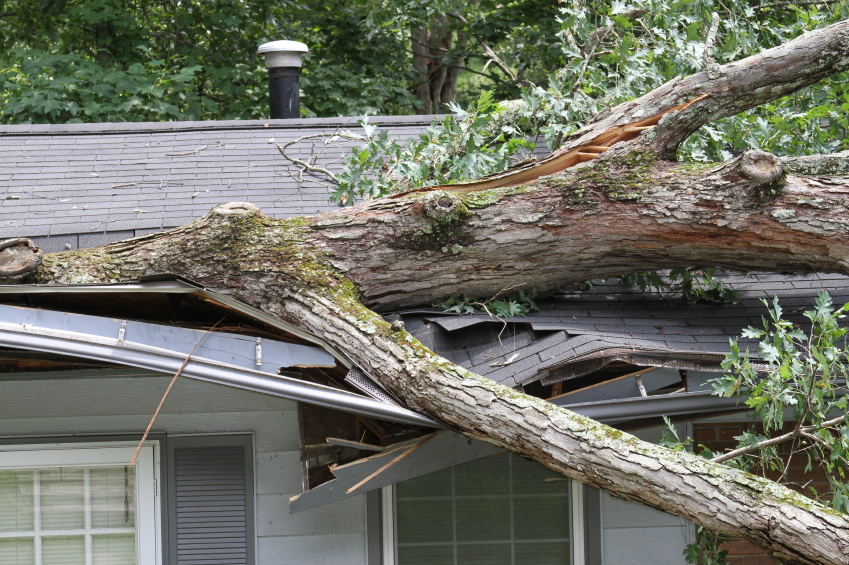A garden full of trees can feel like your very own slice of woodland heaven. But without proper care, they can throw the entire place out of balance.
Overgrown branches, hidden pests, or roots that wander a little too far can quickly turn charm into chaos.
Luckily, you can control these nuisances before they get out of hand with some regular upkeep and a touch of patience. Here’s how to tame those leafy giants.
Spot the Risks Before They Escalate
Overgrown trees aren’t just untidy. They can create serious safety hazards if left unchecked.
For instance, branches that stretch towards power lines could cause electrical fires, while those that lean over rooftops are invitations for storm damage. If they snap in high winds, they could result in costly repairs and put you and your loved ones at risk.
With a little vigilance, you can catch these potentially problematic limbs before it’s too late and avoid those wallet-draining emergencies altogether. So, take a walk around your garden and notice how each tree fits into its space.
Are any branches brushing against walls, shading the greenhouse, or stretching too close to the cables? These details matter, especially during winter gales.
To keep your outdoor sanctuary safe year-round, make this a regular habit and take photos as you go. That way, you can spot changes over time and know when something is amiss.
DIY vs Professional Pruning
You don’t necessarily need heavy machinery to keep your trees in good shape. You can keep smaller specimens in check with a sharp pair of secateurs.
Just remember to put on a thick pair of gloves and always disinfect your tools between cuts to avoid spreading disease from one branch or tree to another. A quick wipe with diluted bleach or rubbing alcohol will do the trick.
That said, some pruning jobs need expert hands. If a tree is towering over the roof, leaning at an odd angle, or edging dangerously close to power lines, it’s time to call a certified arborist.
They’ll know whether pruning, reshaping, or even complete removal is the safest route.
Unusual signs, like cracks in major branches, odd growth patterns, or visible root damage, are all signs of structural weakness. This is another instance where tree surgery can prove invaluable. A quick professional check-up now can save you from bigger headaches later.
Cut Carefully
Pruning is a delicate art. You can’t just start hacking away at the overgrown parts. You need to cut with purpose to encourage strong growth while keeping the plant’s natural form intact.
Start with the obvious culprits: dead, diseased, or damaged branches. To reduce the risk of infection and help the tree make a complete recovery, cut just outside the ‘branch collar’. That’s the slight bump where the limb meets the trunk.
If the crown is looking crowded, thin it a little to allow more light and air to seep through. Just remember, less is more here—removing around 20% of the canopy at a time is plenty.
For some species, such as mature oaks or beeches, it’s advisable to cut even less, around 10–15%.
When cutting a tree back to reduce its size, always prune to a side branch that’s at least a third of the original thickness. This helps the tree keep its natural shape instead of looking like it’s been through the chipper.
Know When to Prune
Regardless of why you’re pruning, you need to time your cuts wisely. Most deciduoustrees respond best to pruning in late winter or very early spring, while they’re still dormant but gearing up for new growth.
Flowering trees may be an exception, though. Species that bloom in spring, like magnolia or cherry, are best pruned right after flowering. Otherwise, you may end up cutting off next year’s buds.
Summer pruning can help control overly vigorous growth or reduce the size of fruit trees, but heavy cuts should be avoided in hot, dry weather.
Whatever you do, do not cut in autumn, as fresh wounds can make trees vulnerable to frost damage and disease.
Different Trees Have Different Rules
Not all trees play by the same rules. Fruit trees, for example, need regular pruning to yield bigger harvests, while most evergreens are best left alone unless you’re removing dead or damaged growth.
As for conifers, like pines or spruces, they tend to be the most sensitive. You need to be especially careful with them, as they rarely regrow from old wood.
Age plays a key role here as well. Younger trees usually need gentle shaping early on to develop solid structures later. As for their mature neighbours, they only need trimming every few years.
To help them grow to their full potential, always research the specific needs of the species you have before reaching for the secateurs.
Go Beyond the Basics
Healthy, well-kept trees give back far more than they take. They add beauty and shade, keep energy bills down in summer, and even boost property value. On top of that, they provide food and shelter for birds and pollinators, making your garden feel alive year-round.
In the end, caring for your trees is less about chores and more about protecting an investment that grows more valuable with time.
Besides regular pruning, you also need to look after the roots to prevent structural damage that can warrant tree removal. Avoid piling heavy objects around the base or driving over root networks, as compacted soil can suffocate their growth.
Mulch is another handy helper that keeps the ground moist and rich, all while improving drainage. However, you need to apply it carefully in a wide, shallow ring around the base, keeping it a few inches away from the trunk to prevent rot and pests.
Know When to Step Back
Sometimes, the best thing you can do for your trees is resist the urge to interfere.
Not every uneven branch or patch of lopsided growth needs correction. Trees are remarkably resilient, and given the right conditions, they’ll often balance themselves out.
Over-pruning, on the other hand, can stress them and leave them vulnerable to pests and diseases. As a general rule, you shouldn’t remove more than 25–30% of a tree’s crown in a single year.
When in doubt, take a lighter hand, or better yet, leave the decision to an experienced arborist.
Conclusion
A little care now and then, whether it’s a light prune, a cosy mulch blanket, or some professional care, will keep your trees happy and healthy.
So, next time you look up at that leafy canopy, inspect it more closely and see if it needs a little help. With quick action and consistent upkeep, your garden will remain a living, breathing source of joy for years to come.










